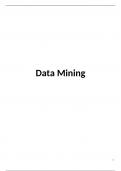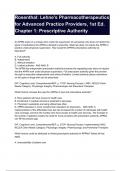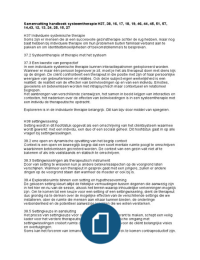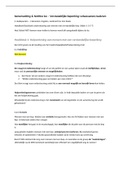Samenvatting
Machine Learning (Data Mining) - Samenvatting (slides en handboek)
- Vak
- Instelling
- Boek
Behaalde score: (17/20); Kwalitatieve, uitgebreide, duidelijke, allesomvattende (alle behandelde hoofdstukken) (128p) samenvatting (in Engels) van het vak Data Mining gebaseerd op het handboek, eigen notities en de slides. Recentelijk geschreven en gebruikt (2022).
[Meer zien]








